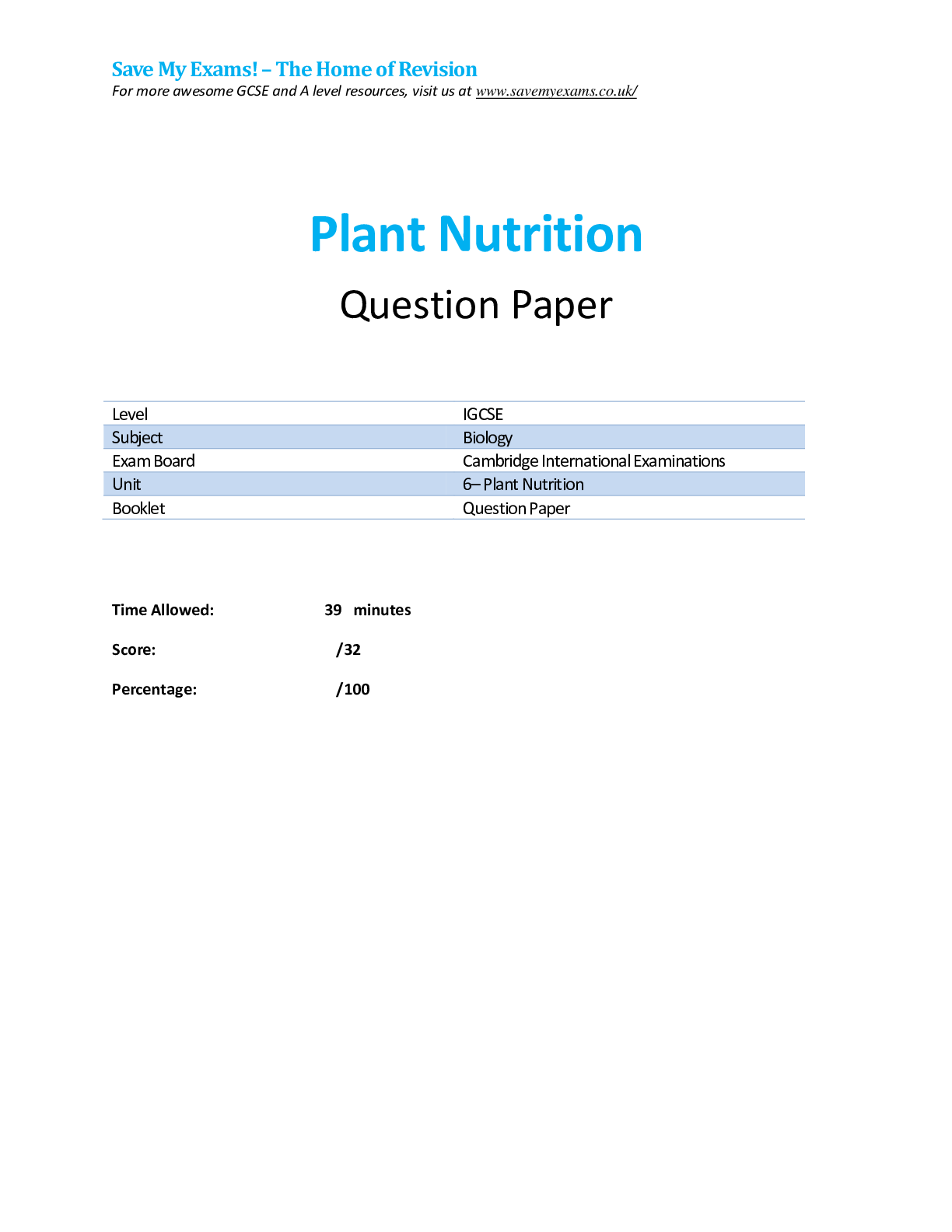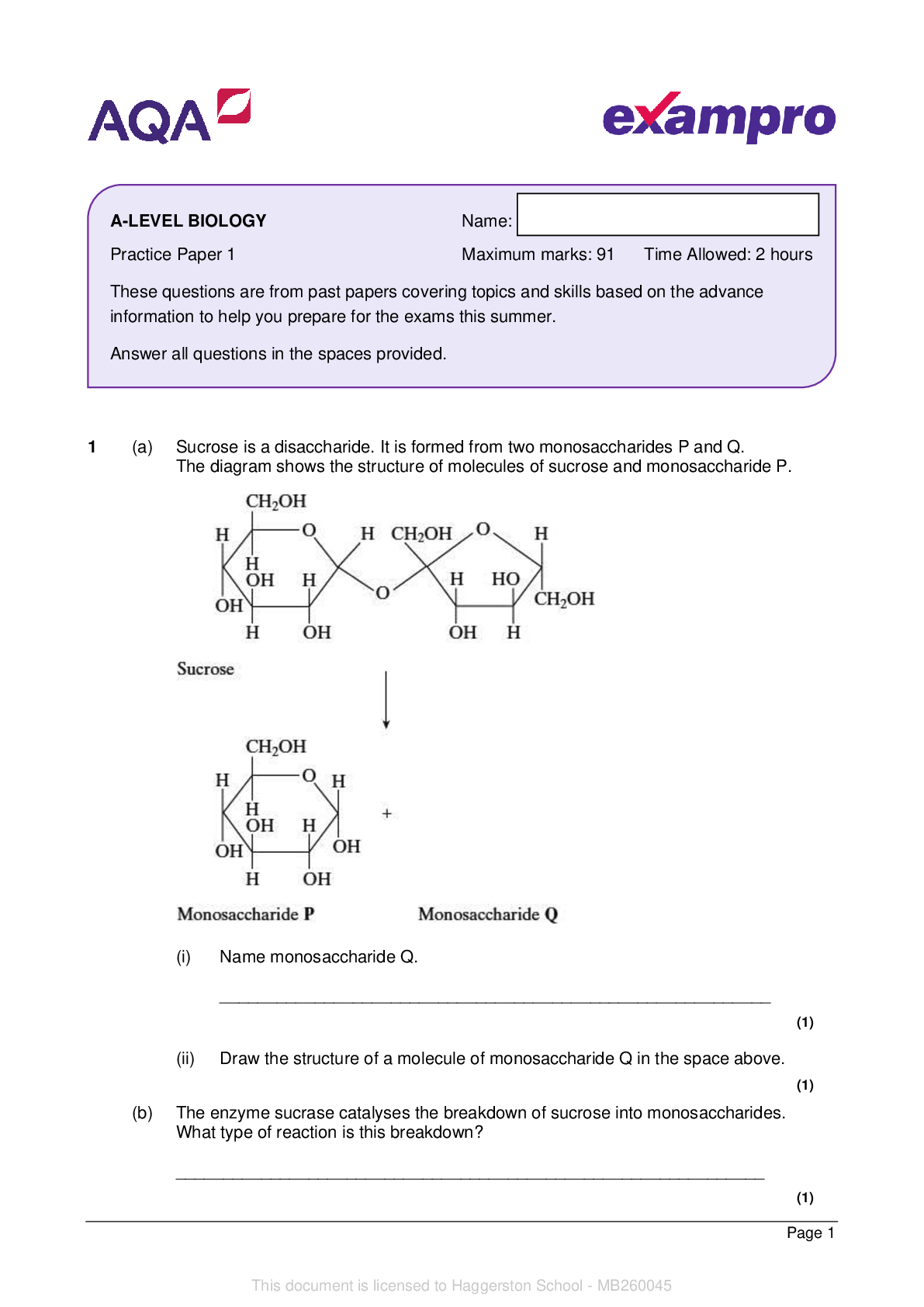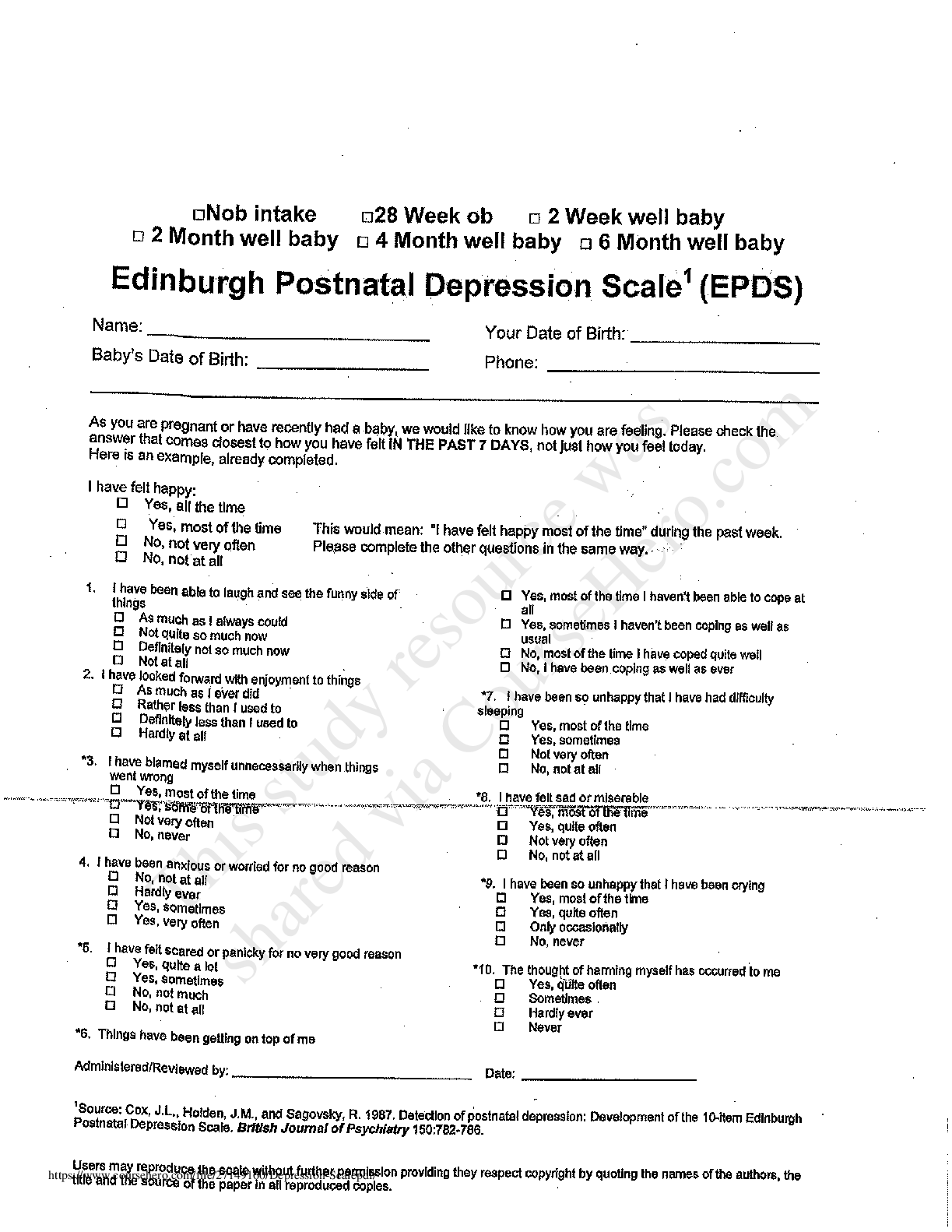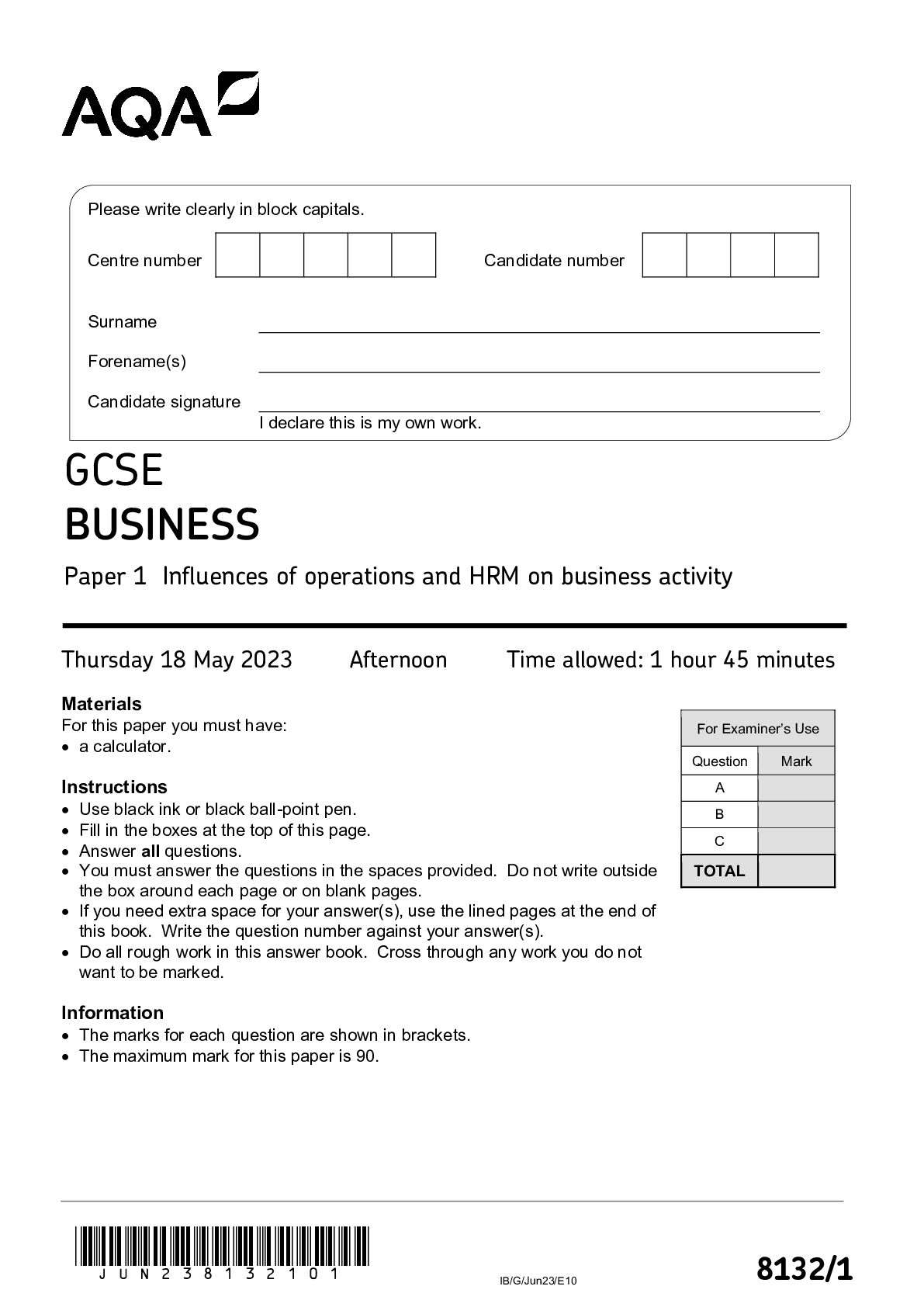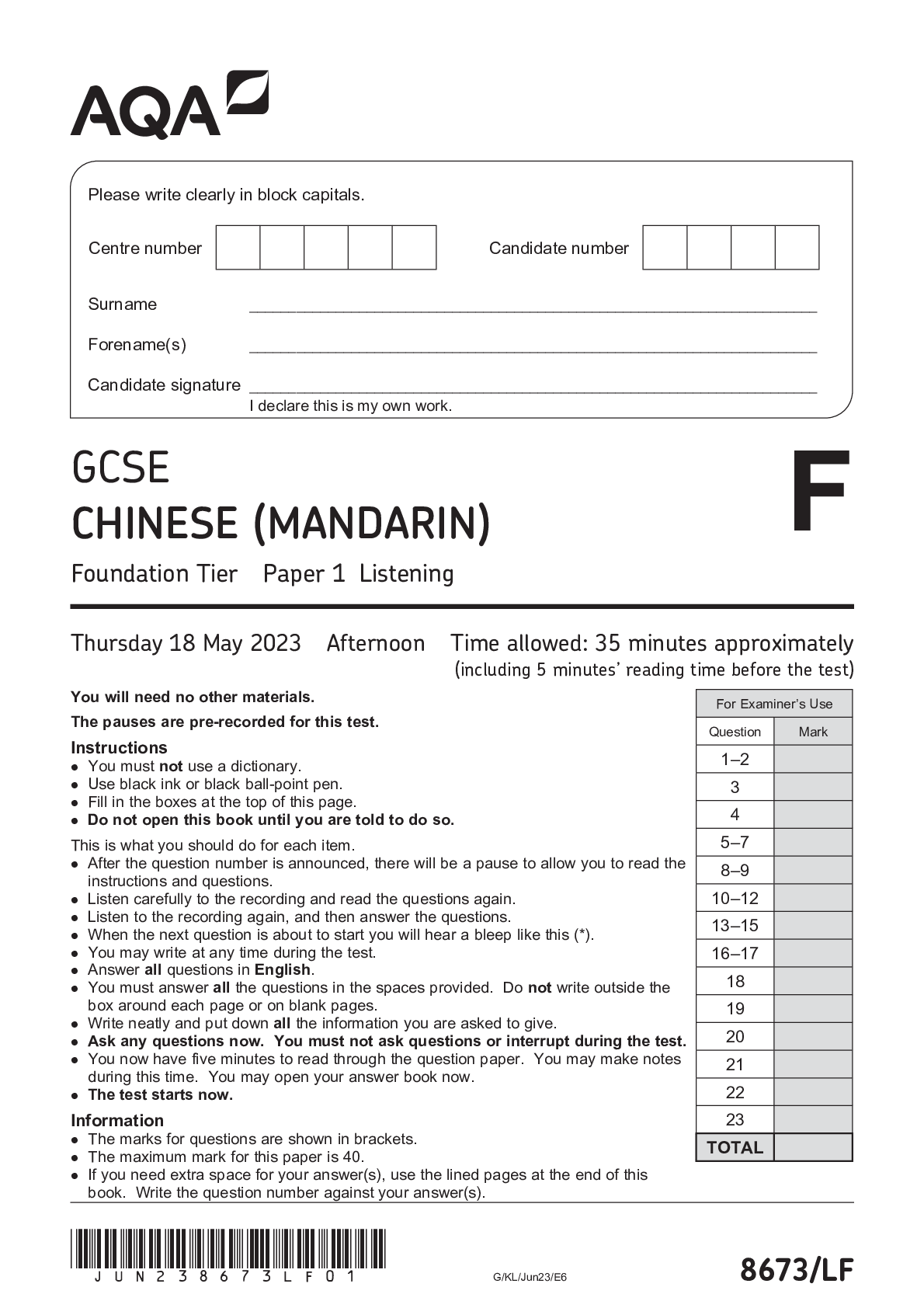Biology > QUESTION PAPER (QP) > IGCSE-CIE, Cambridge International Examinations: BIOLOGY, Organisation of the Organisms. QUESTION PA (All)
IGCSE-CIE, Cambridge International Examinations: BIOLOGY, Organisation of the Organisms. QUESTION PAPER 2. 50 Questions, MCQ. 2022
Document Content and Description Below
IGCSE-CIE, Cambridge International Examinations: BIOLOGY, Organisation of the Organisms. QUESTION PAPER 2. 50 Questions, MCQ. 2022Organisation of the Organisms Question Paper 2 Time llowed: 60 minut... es Score: /50 Percentage: /100 1Which structures contain a cell nucleus? key ✓= nucleus ✗= no nucleus – 2The diagram shows some animal cells, as seen under the microscope. X What will be present at X? one cell membrane one cell wall two cell membranes two cell walls 3The diagram shows a spongy mesophyll cell. P Q R S Which structures indicate that this is a plant cell? P and S Q and R R and P S and Q – 4The diagram shows blood passing through an arteriole into a capillary. Part of the capillary wall has been cut away to show the blood. Q P direction of blood flow What is the level of organisation of the structures labelled P and Q? P rganorgan organ tissue issuetissue t 5The diagrams show a leaf cell before and after staining with iodine solution. green before staining blue-black after staining colour change Which substance causes the iodine solution to change colour? chlorophyll protein reducing sugar starch – 6 The diagram shows a cell seen under the light microscope. P Q Which labels are correct? P Q cytoplasm vacuole cytoplasm vacuole cell membrane cell membrane cell wall cell wall 7Which is a tissue and which is an organ? tissue organ xylem the stomach a root the liver a group of liver cells a group of palisade cells the brain the reproductive system 8Which series of terms is listed in order of increasing level of organisation? cell → organ → tissue → organ system cell → tissue → organ → organ system tissue → cell → organ → organ system tissue → organ → organ system → cell – 9The diagram shows six cells. P Q R S T U Which are plant cells and which are animal cells? plant cells animal cells P, Q and U P, R, S and T Q and T R, S and U R, S and T Q and U P, R, S and U P, Q and T 10Which diagram shows a liver cell? – 11 What is a feature of both plant and animal cells? a cell membrane a cell wall a large vacuole chloroplasts 12The diagram shows structures that form the surface of the trachea. S Which level of organisation is the structure labelled S? cell organ organ system tissue 13 What is a correct description of red blood cells? thin region in the cell centre large nucleus 14Which statement about xylem is correct? It carries sucrose. It converts light energy to chemical energy. It divides actively to help the plant to grow. It is no longer living. 15The diagram shows a bacterial cell. cell wall cell membrane cytoplasm N How is this cell different from a typical animal cell? It has a cell membrane. It has cytoplasm. It has no chloroplasts. It has no nucleus. 16The diagram shows a plant cell. In which labelled part of the cell is sugar made? cell wall vacuole chloroplast nucleus – 17Which of these tissues is not part of the organ with which it is paired? tissue organ containing this tissue iliaciliated muscle nervous xylem int 18The diagram shows a specialised cell. nucleus vacuole cell membrane cell wall For which function is the cell adapted? absorption of water contraction of muscles movement of dust particles transport of oxygen 19The diagram shows some cells. cell membrane cytoplasm nucleus What are these cells? liver cells palisade cells red blood cells white blood cells – 20Which cells line the trachea? 21 The photograph shows a cross-section of a root. xylem root hair The root hair and the xylem are part of the same cell and organism. cell and tissue. organ and organism. tissue and organ. – 22 The diagram shows a motor (effector) neurone. Which structure is also found in white blood cells, but not in red blood cells? 23Which structures are found in a liver cell? cell membrane cell wall chloroplast large vacuole cytoplasm nucleus 24t what level of organisation is a leaf? organ organism organ system tissue – 25The diagram shows an amoeba, a single-celled living organism. nucleus oxygen diffuses into the cell carbon dioxide diffuses out of the cell food vacuole X The movement of gases at X indicates the occurrence of which process or processes in the cell? excretion and nutrition excretion and respiration nutrition and respiration respiration only 26The diagram shows a liver cell. Which structure is found in a palisade cell that is not present in this liver cell? cell membrane chloroplast cytoplasm nucleus – 27Which diagram shows a plant cell? 28Which statement about cells or tissues, is correct? ells in the respiratory tract are long and thin. Muscle cells are biconcave. Red blood cells have no nucleus. Xylem vessels have ciliated cells. 29Why do some root cells have root hairs? for the maintenance of the temperature of the cell sap to increase the surface area of the cells to increase the volume of the cell sap to provide a place for cell nuclei 30Some cells have cell walls. Which statements are correct for cell walls? in animals in plants absent absent present inside cell membrane present outside cell membrane present inside cell membrane present outside cell membrane absent absent – 31In a mesophyll cell, where are chloroplasts found? between the cell wall and the cell membrane in the cytoplasm in the nucleus in the vacuole 32The bar chart compares the percentage of oxygen carried by red blood cells entering and leaving a relaxed muscle. On the bar chart, 100% is the amount of oxygen carried by red blood cells as they leave the lungs. entering leaving % of oxygen carried by red blood cells How much oxygen would red blood cells be likely to carry when leaving the same muscle after contraction? 40% 60% 90% 100% 33Root hair cells are found on plant roots. Which feature would be present in a root hair cell but not a sperm cell? cell membrane cell wall chloroplasts cytoplasm – 34 Which structure is found in a palisade cell but not in a liver cell? cell membrane central vacuole cytoplasm nucleus 35Which cell shows the position of the nucleus correctly? 36What are the levels of organisation of • the wall of a villus, • the small intestine? wall of a villus small intestine cell cell tissue tissue organ organ system organ organ system 37Phloem is an example of a cell. a tissue. an organ. an organ system. – 38The diagram shows four specialised cells. liver cell white blood cell muscle cell sperm cell Which feature is not common to all of these cells? cell membrane cytoplasm diploid number of chromosomes nucleus 39The diagram shows a plant cell. PQR S T Which labelled structures are found in plant cells but not in animal cells? P and Q Q and R R and S S and T 40The diagram shows another plant cell. Which feature shows that it is a palisade cell? a large nucleus a large vacuole a thick cell wall many chloroplasts – 41Which structures are adapted for supporting a plant? phloem tissues root hair cells stomata xylem vessels 42Which describes the structure and function of a red blood cell? structure function cell contents are dead has a nucleus has cilia has no nucleus transport of water produces antibodies moves particles in the respiratory tract transport of substances 43The diagram shows a cell from a plant leaf. 1 2 5 4 3 Which parts are not found in animal cells? 1 and 2 2 and 3 3 and 4 4 and 5 – 44The diagram shows the breathing system and a section of an alveolus surrounded by a capillary. Which label shows a cell? 45 The diagram shows a structure found in the human body. This is an example of an organ. an organism. an organ system. a tissue. – 46Which row shows the most likely number of chloroplasts in three types of cell in a leaf? epidermis palisade mesophyll guard cells 47 The diagram shows some liver cells as they appear under the microscope. How many cell walls can be seen? 0 2 3 5 48Which row shows the structures present in plant and animal cells? cell wall cytoplasm nucleus cell membrane plant cell animal cell plant cell animal cell plant cell animal cell plant cell animal cell ✗ ✓ ✓ = present ✗ = absent 49Which structure is at a different level of organisation from the other three? kidney liver neurone testis [Show More]
Last updated: 1 year ago
Preview 1 out of 20 pages

Reviews( 0 )
Document information
Connected school, study & course
About the document
Uploaded On
Jun 08, 2022
Number of pages
20
Written in
Additional information
This document has been written for:
Uploaded
Jun 08, 2022
Downloads
0
Views
47

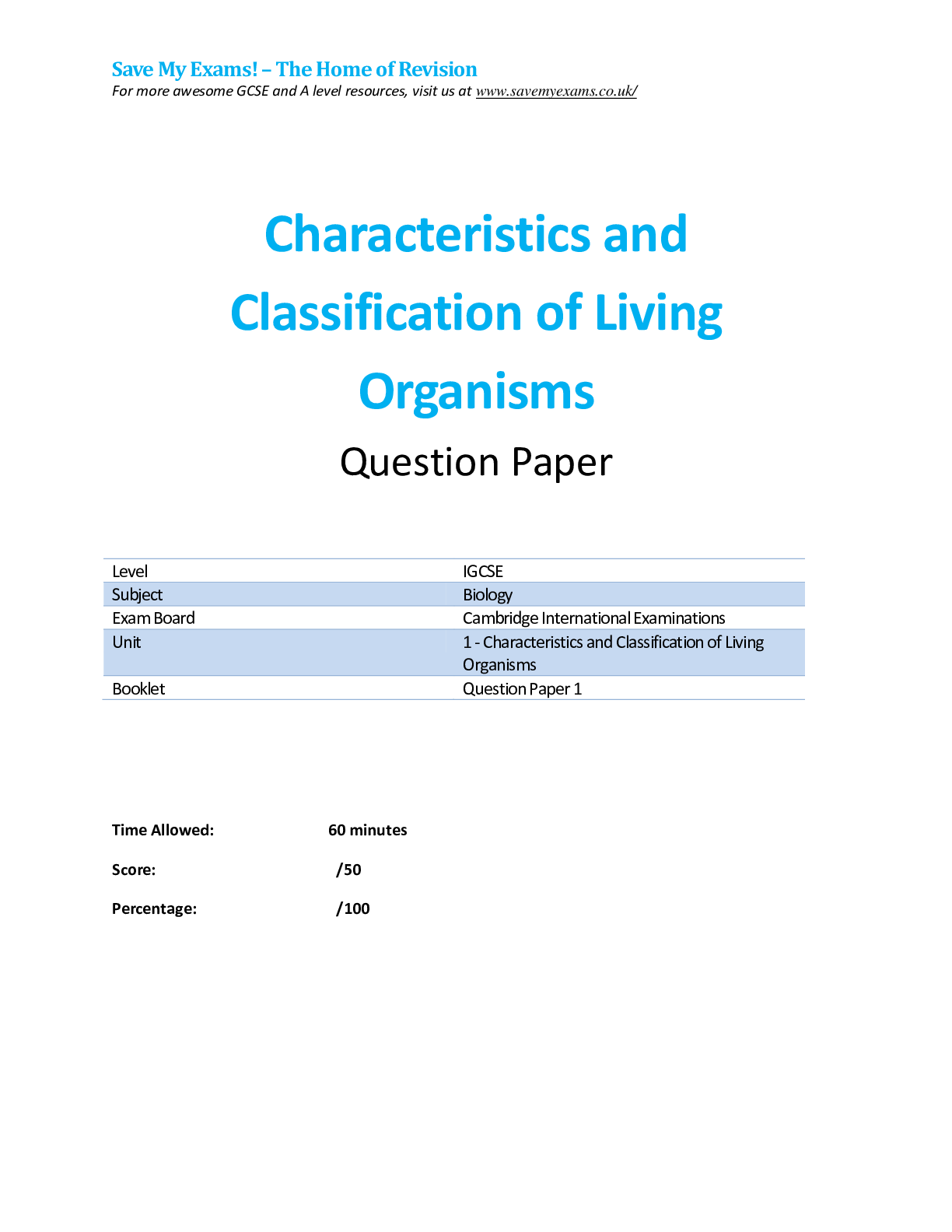


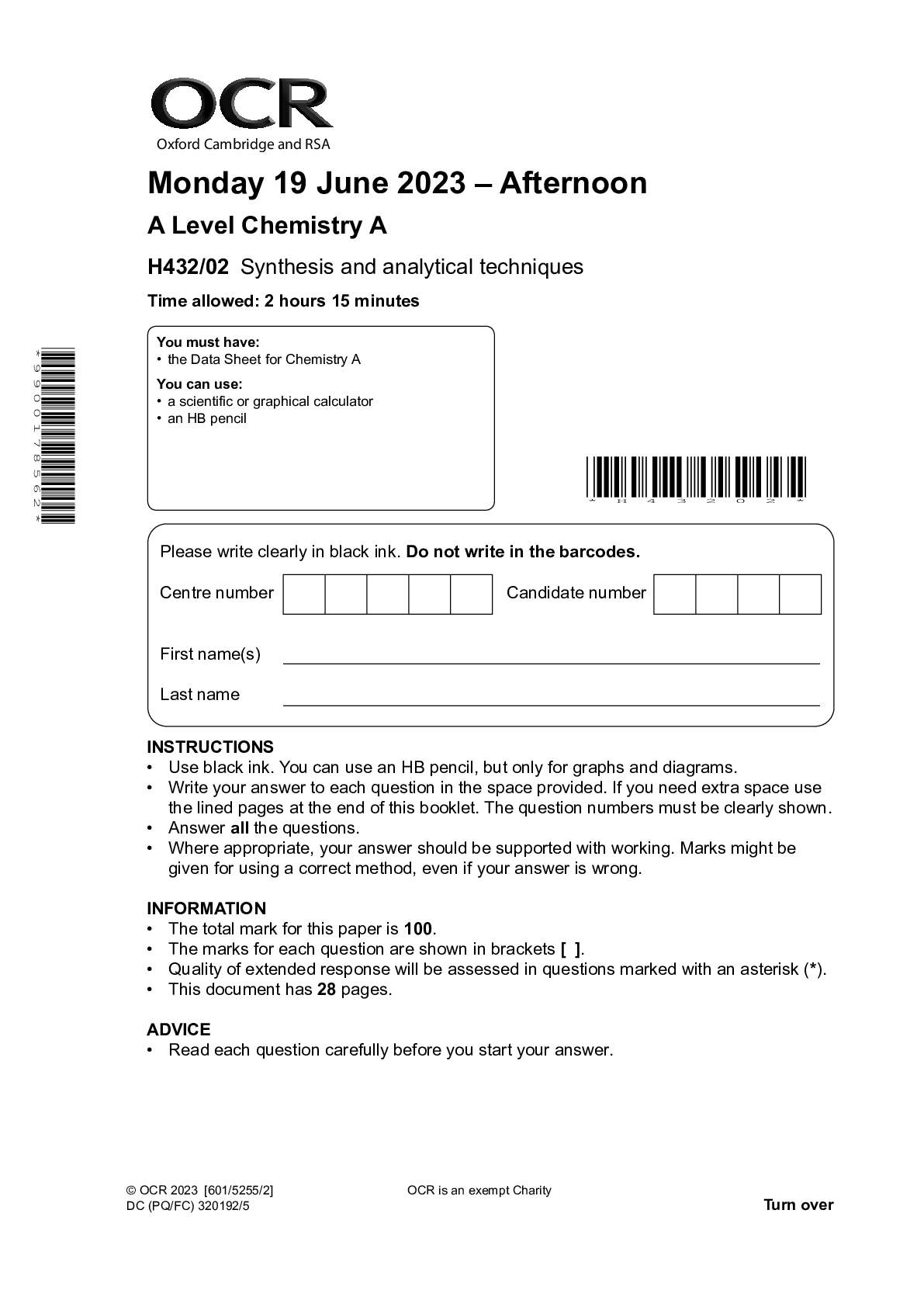
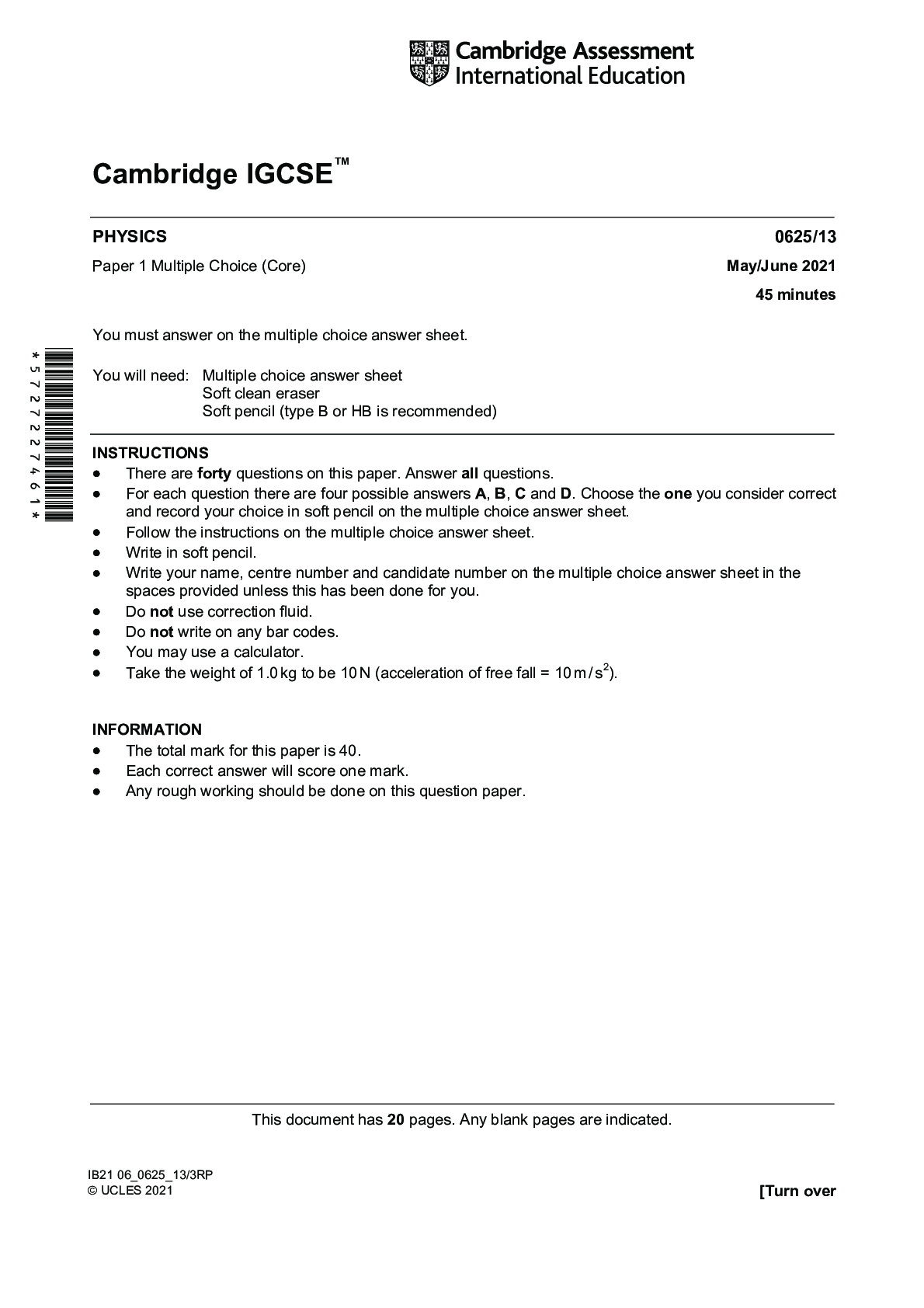

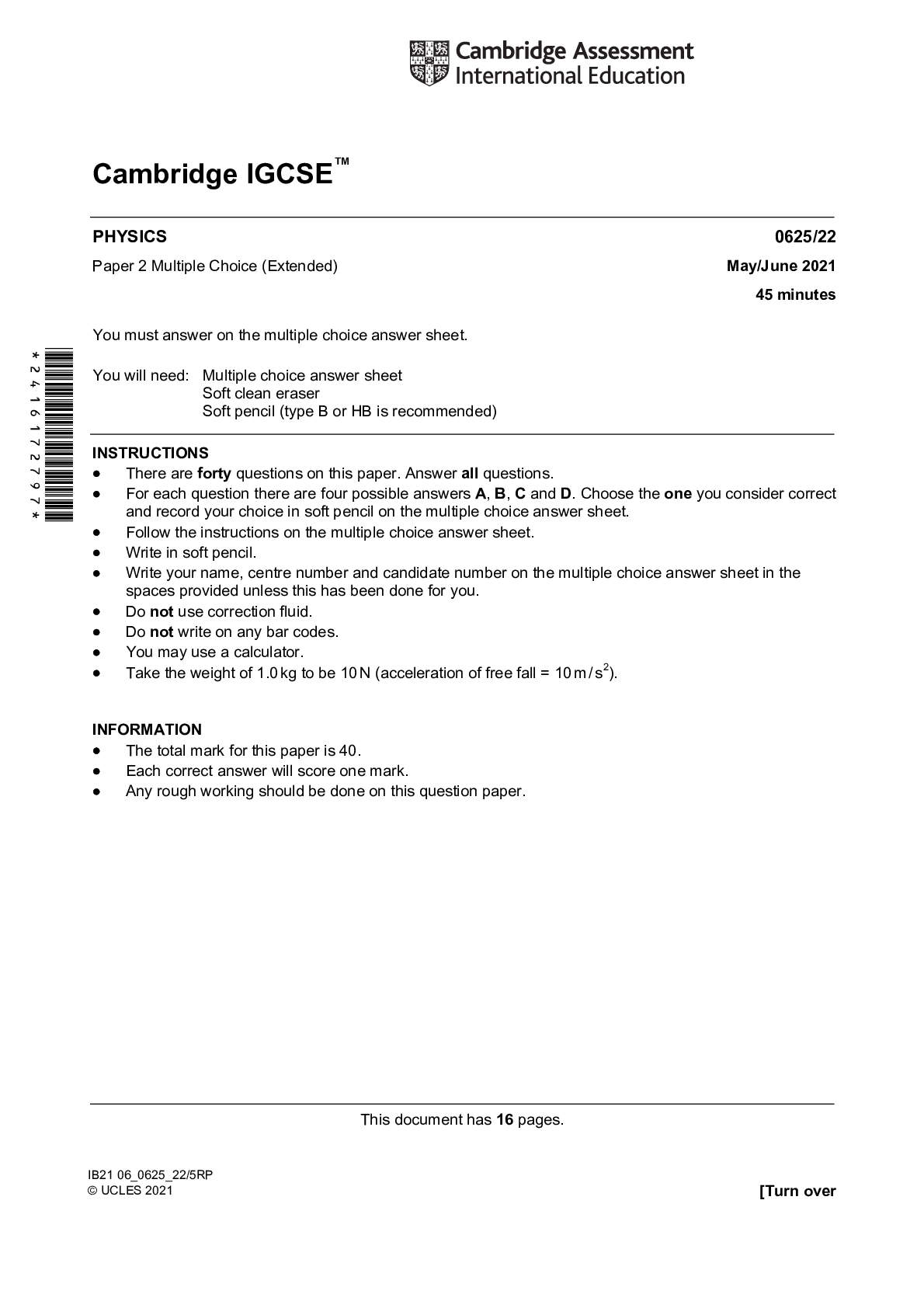
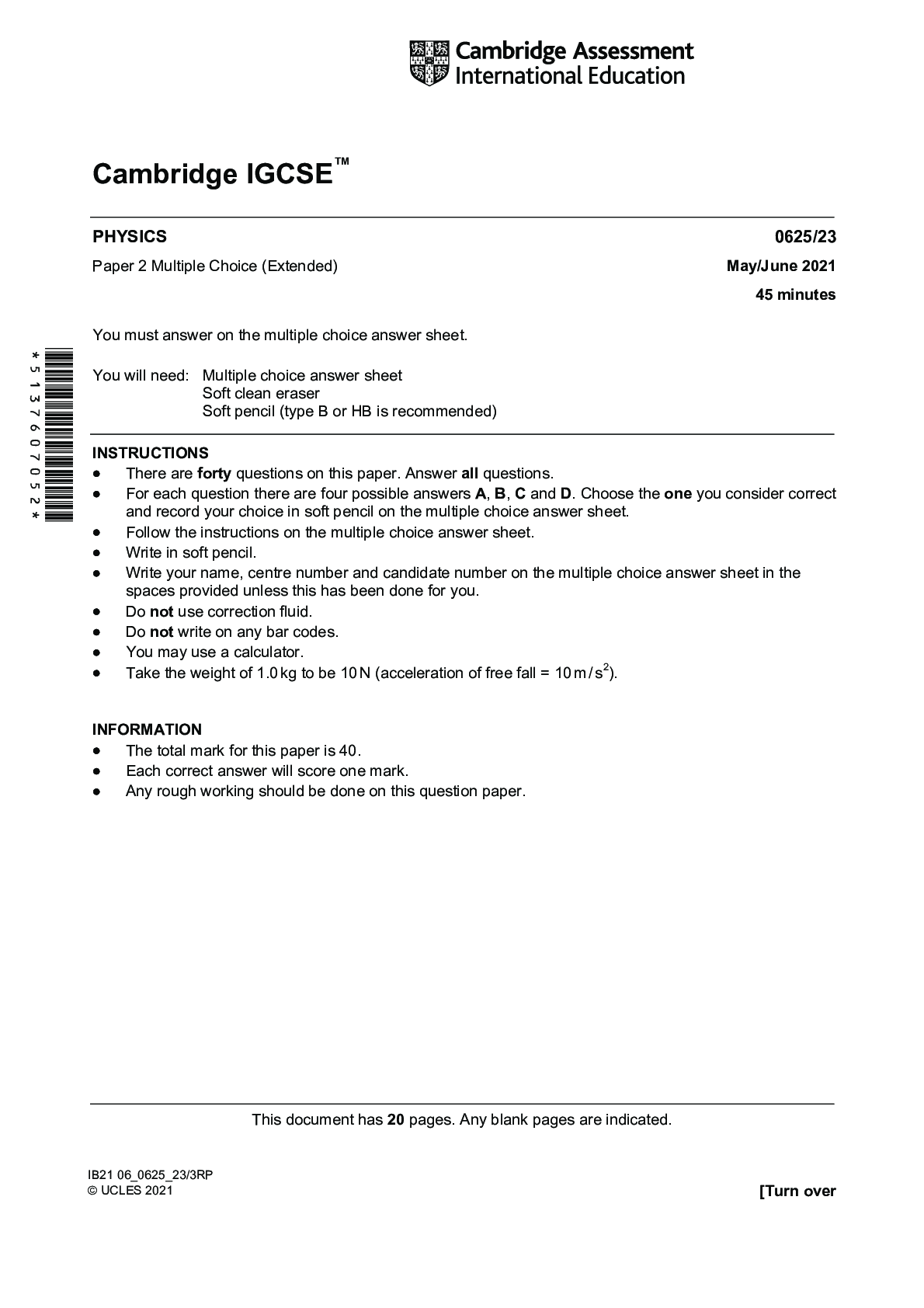
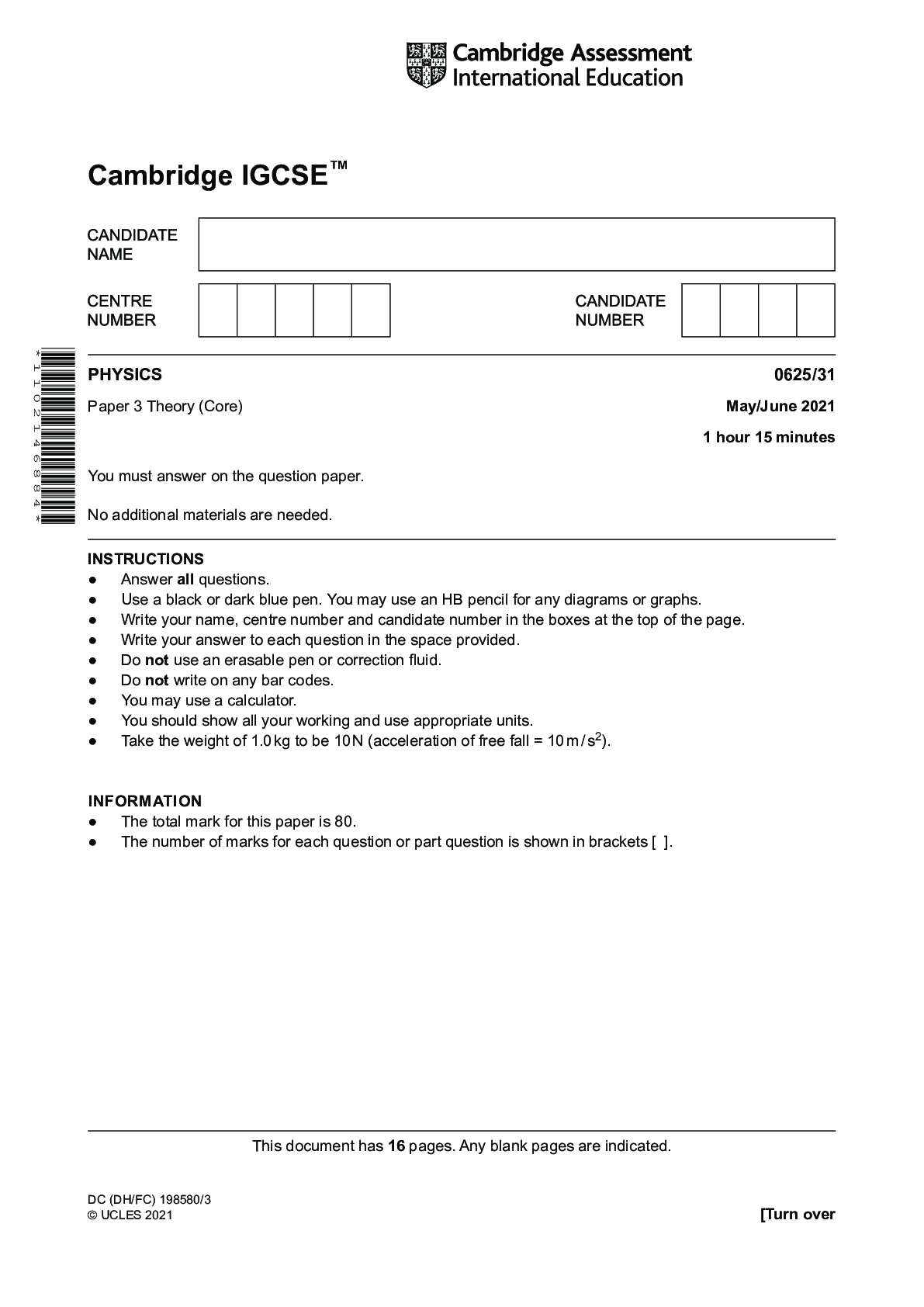

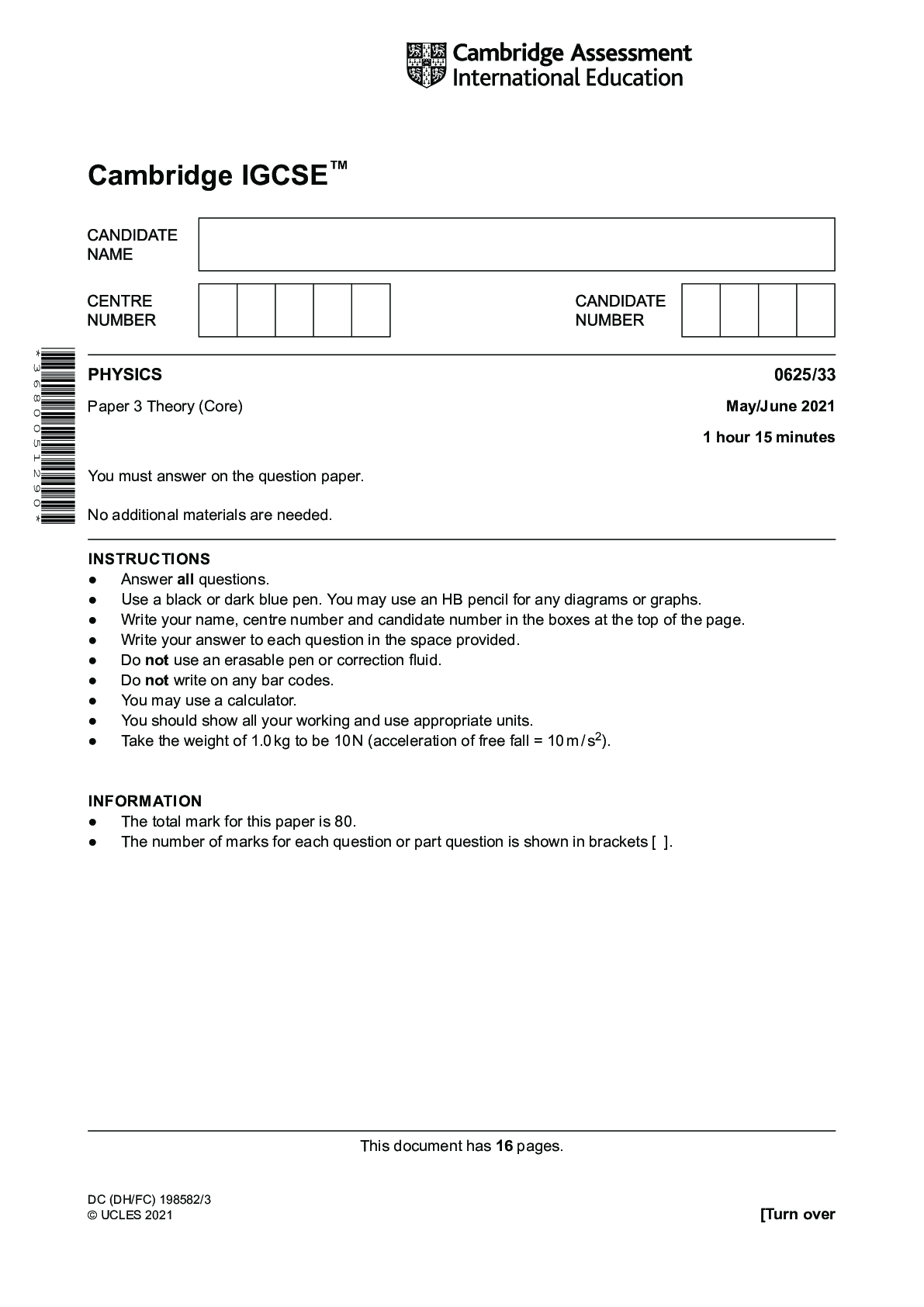

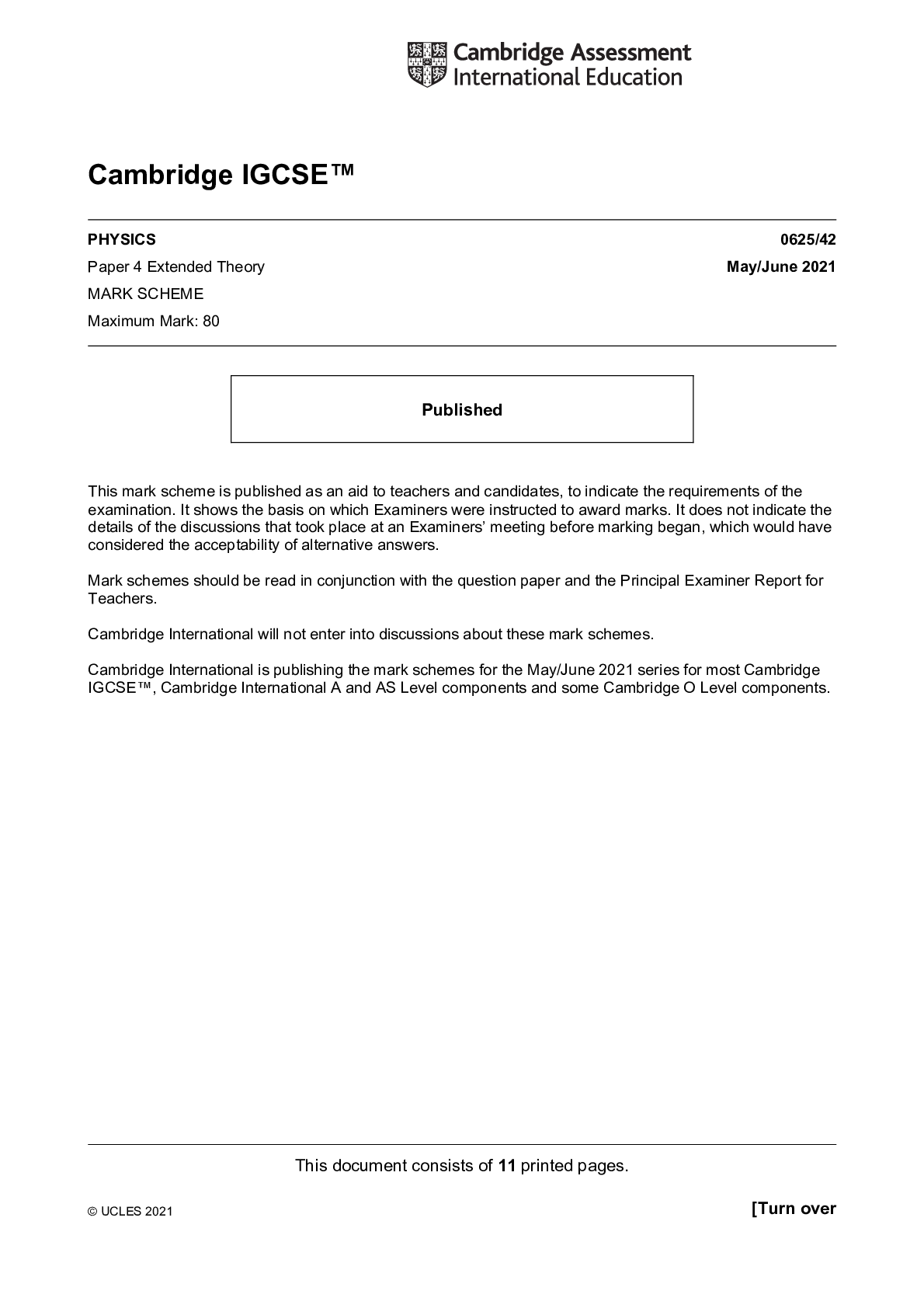
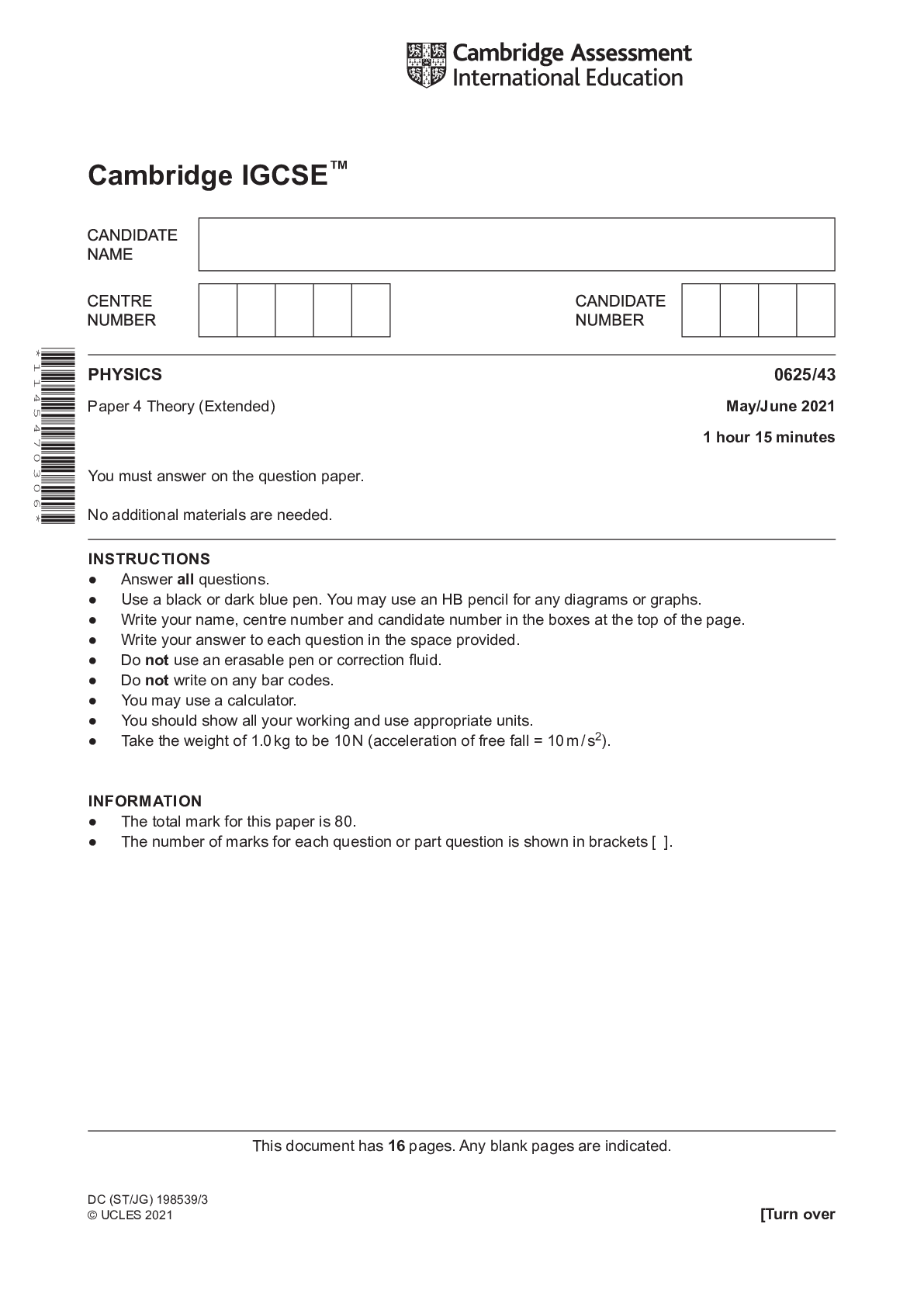
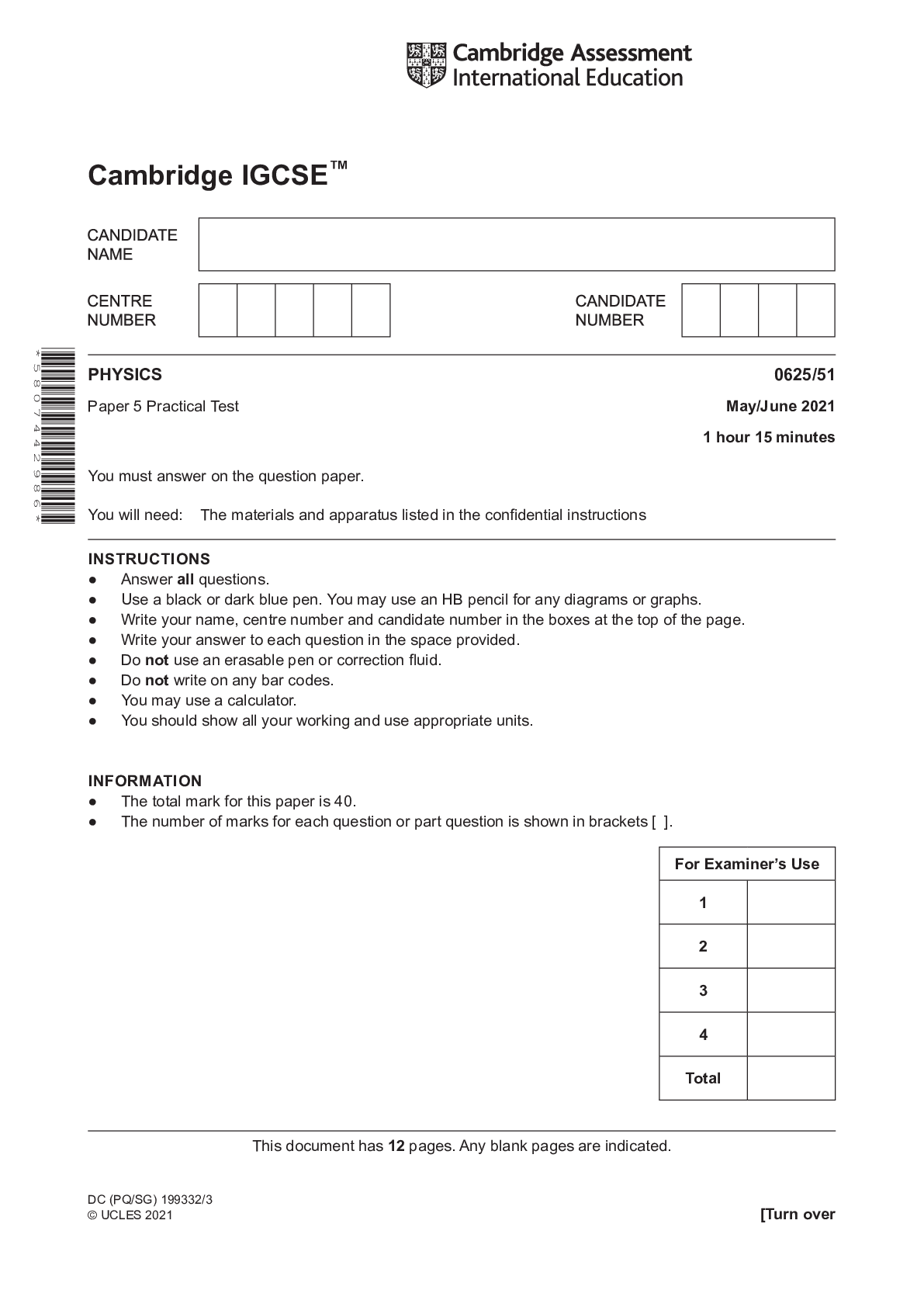

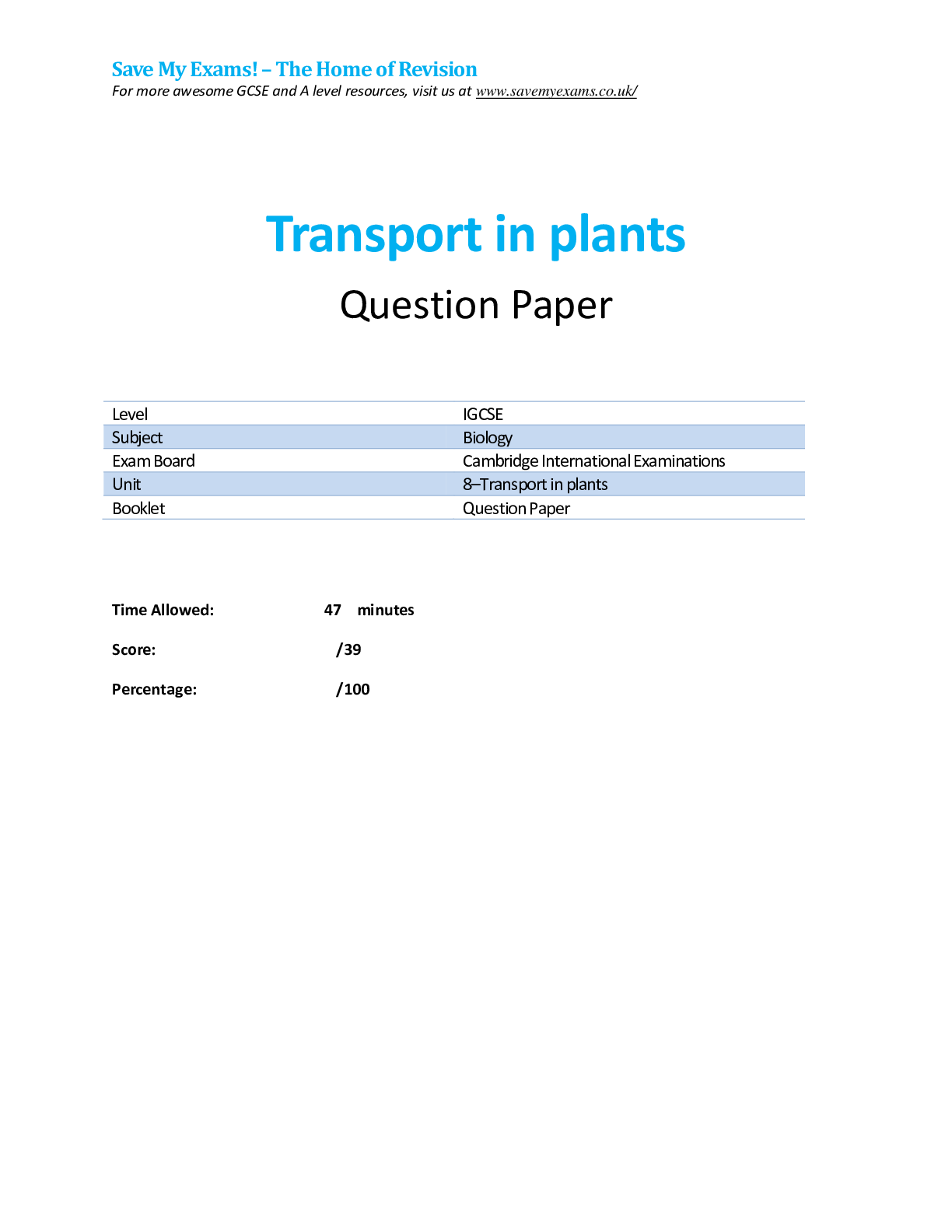

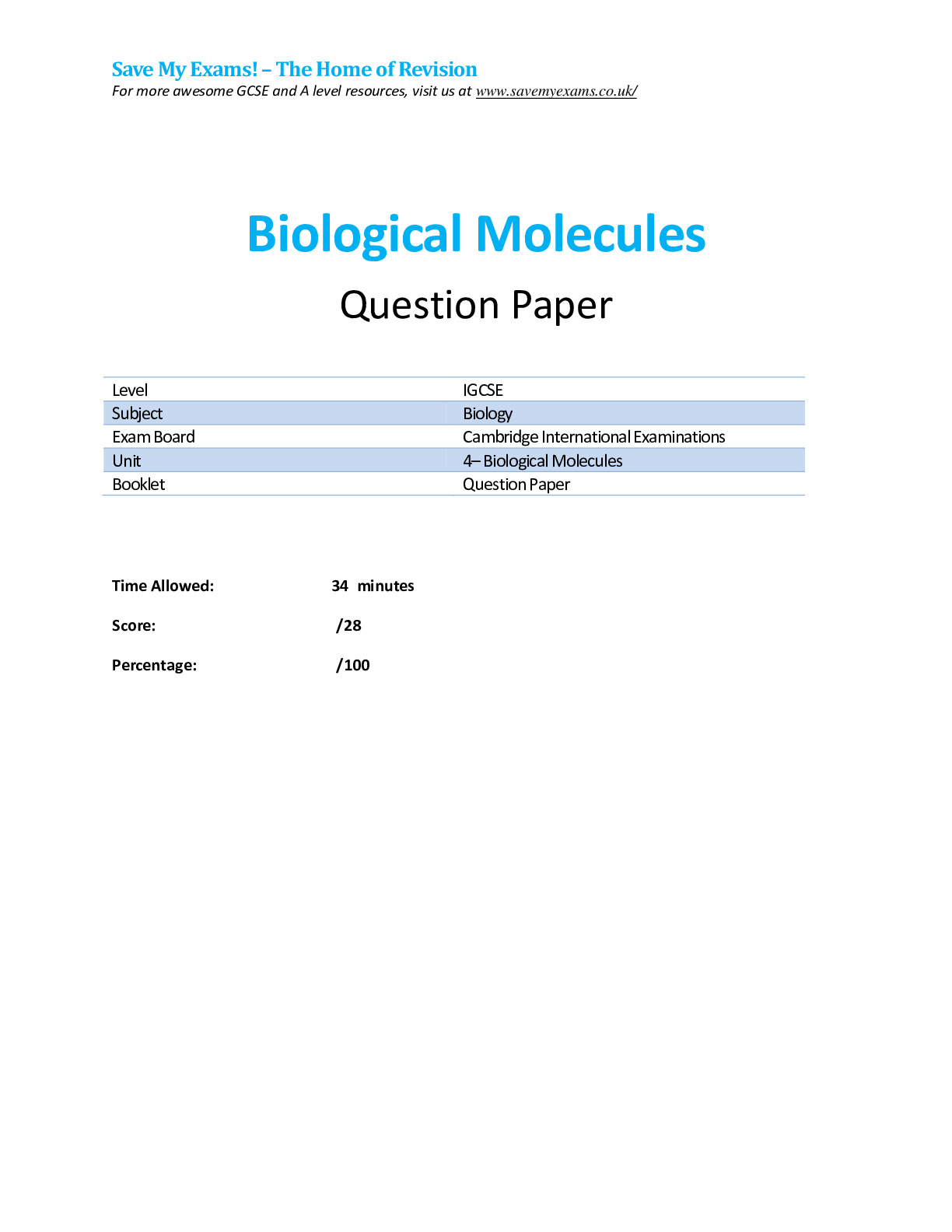
.png)
